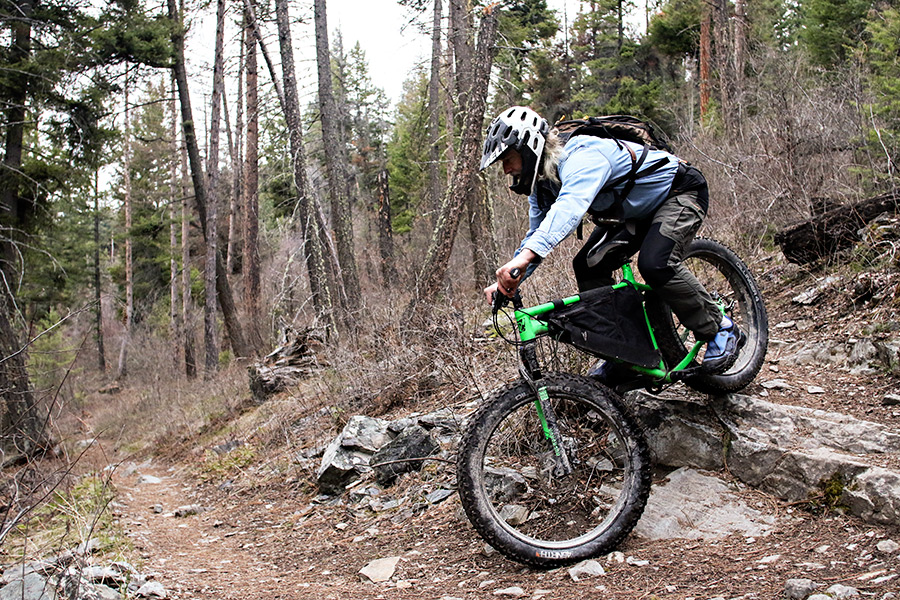When officials in Glacier National Park started plowing Going-to-the-Sun Road in late spring, the usual flood of cyclists descended on the park to complete the iconic ride to Logan Pass, bereft of cars.
Every day until the road fully opened to motorized traffic on July 13, hordes of cyclists ascended 3,500 vertical feet over the 15-mile climb from Avalanche Creek to Logan Pass.
The climb isn’t easy, but many riders got an extra boost this year, as electric bikes, or e-bikes, were allowed in the park for the first time.
In August 2019, U.S. Secretary of the Interior David Bernhardt signed an order exempting e-bikes from the motorized vehicle definition to increase recreational opportunities on public lands.
The order opened up all public lands managed by Interior — National Park Service, Bureau of Land Management, Bureau of Reclamation and Fish and Wildlife Service — to e-bike use.
Interior finalized its e-bike regulations on Oct. 2 of this year, even as a lawsuit to overturn the decision is ongoing.
The text only allows e-bikes to be used on trails where bicycles are already currently allowed, but it provides a new point of contention to the ongoing discussion over the place bikes have in wild areas, and anytime a new method of backcountry travel gains popularity, it increases the chances for human-wildlife encounters.
During June, at least three groups of cyclists on the Sun Road were blocked from climbing and descending due to bears on the road.
In 2017, a high-profile grizzly attack made headlines when a Flathead Valley native, Brad Treat, was killed while mountain biking in West Glacier.
In general, bears and humans don’t mix well. And yet, residents of the Flathead and visitors to Glacier National Park and the surrounding areas utilize a section of land that bisects the largest grizzly bear habitat in the Lower 48, making bear sighting commonplace, and indeed an attractant to visit.
The effects of human recreation on the environment and animal inhabitants are an increasing area of interest to researchers as recreation opportunities in public lands continue expanding.
Several studies over the years have indicated that motorized and non-motorized recreation can impact both habitat and habits of deer and elk. A new study released last month had a similar finding with moose and bears, with an interesting culprit: bikes.
The study, led by World Wildlife Fund researcher Robin Naidoo, examined the effects of hikers, bikers, horseback riders and motorized users on 13 different species of wildlife.
The study utilized 61 camera traps spread along roads and trails over 550 square kilometers of the South Chilcotin Mountains Provincial Park in British Columbia. Researchers observed animals and recreational activities and used a formula to determine an “avoidance-attraction ratio” each species had with each form of recreation.
The study found a greater negative impact of mountain biking on moose and grizzly bears than all other forms of recreation, including motorized travel.
The researchers concluded that wildlife in the area may perceive mountain bikers as more similar to motorized vehicles than to non-motorized recreation and suggested that temporal avoidance by wildlife could be related to speed of recreational travel.
Speed of travel was also specifically mentioned in a board of review report on the Treat attack, which noted surprise encounters with bears are one of the most common reasons for grizzly aggression toward humans. Moving swiftly and silently, as is common with cyclists, increases the odds of a surprise encounter with a bear.
The potential for increased interactions with bears and other species is one criticism of the push to open huge swaths of public lands to electric bikes, and to allowing bikes into Wilderness Study Areas.
Bikes are not allowed in Wilderness Areas or Wilderness Study Areas, another ongoing argument about access. The argument is based on the prohibition of “mechanical transport” in the Wilderness Act, which has been interpreted to include bicycles.
Similarly, Wilderness Study Areas, which have the potential to receive a wilderness designation such as the Ten Lakes Wilderness Study Area in the Kootenai National Forest, are managed as wilderness, prohibiting bikes.
Finding a way to balance the increased use of public lands while taking into consideration the potential for disturbing wildlife habits is a fine line to walk — or bike.
Mountain biking on public land in bear country has exploded in popularity in recent years and is likely to continue.
The nonprofit Flathead Area Mountain Bikers (FAMB) has been one of the biggest advocates for mountain biking in the area. Recently, FAMB has been collaborating with the U.S. Forest Service, the Whitefish Legacy Project and the Gateway to Glacier Trail to start work on roughly 55 miles of new multiuse trails near Columbia Falls and northwest of Whitefish Mountain Resort.
The group acknowledges they are always aware they are recreating in bear county, and recommends always carrying bear spray while riding.
The e-bike ruling by Bernhardt doesn’t apply to Forest Service property, which is part of the U.S. Department of Agriculture. While the Forest Service is reviewing its policies based on Interior’s decision, e-bikes are currently only allowed on motorized roads and trails. The Flathead National Forest has 1,427 miles of road and 226 miles of trails available for e-bike use.
In Glacier Park, there are only a few paths and roads that allow bikes, and now e-bikes. In addition to the Sun Road, bikes are allowed on the paved pack from the park headquarters to Apgar, along the Old Flathead Ranger Station Trail, the Fish Creek trail and along the Inner North Fork Road.
As always, it is recommended make noise and carry bear spray when recreating in bear country.
